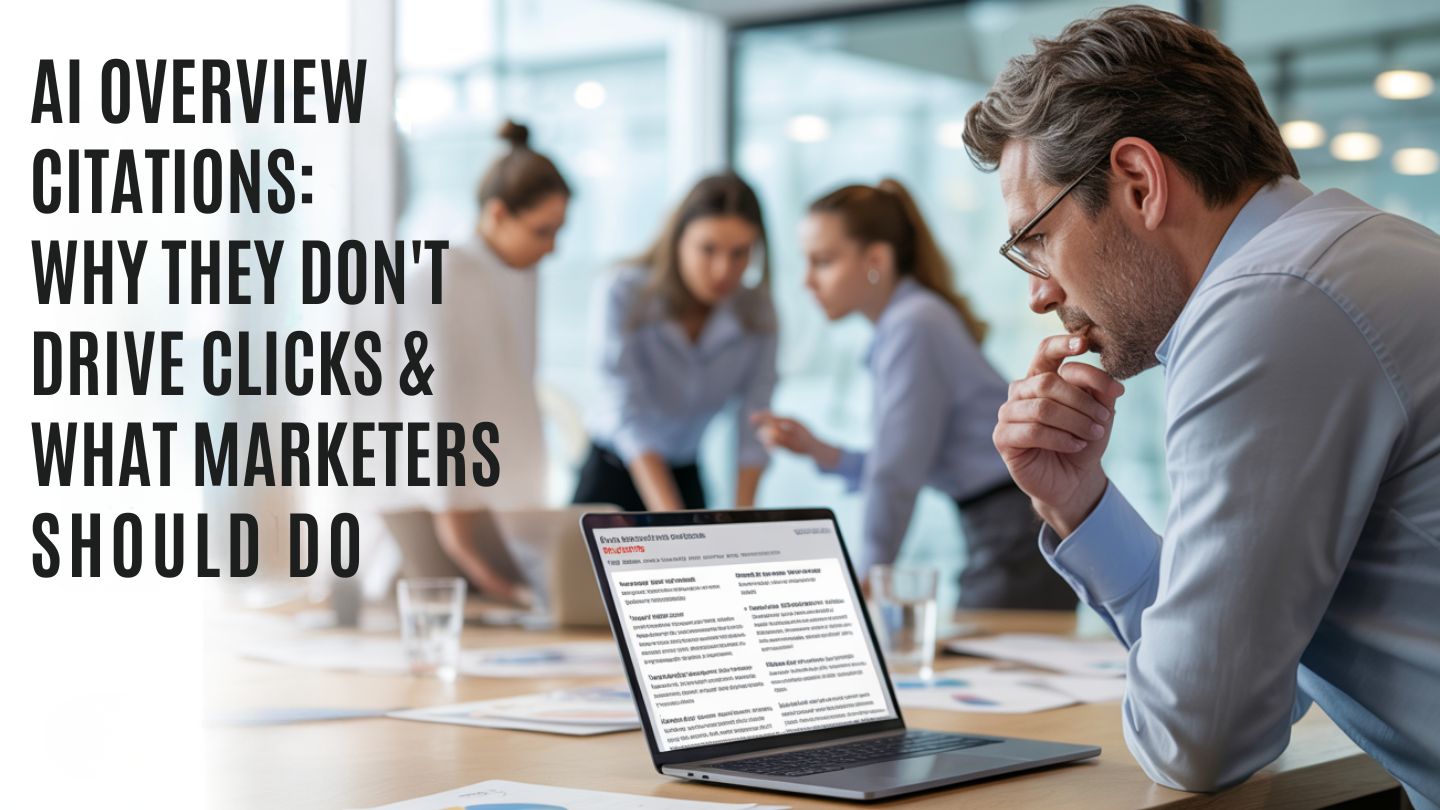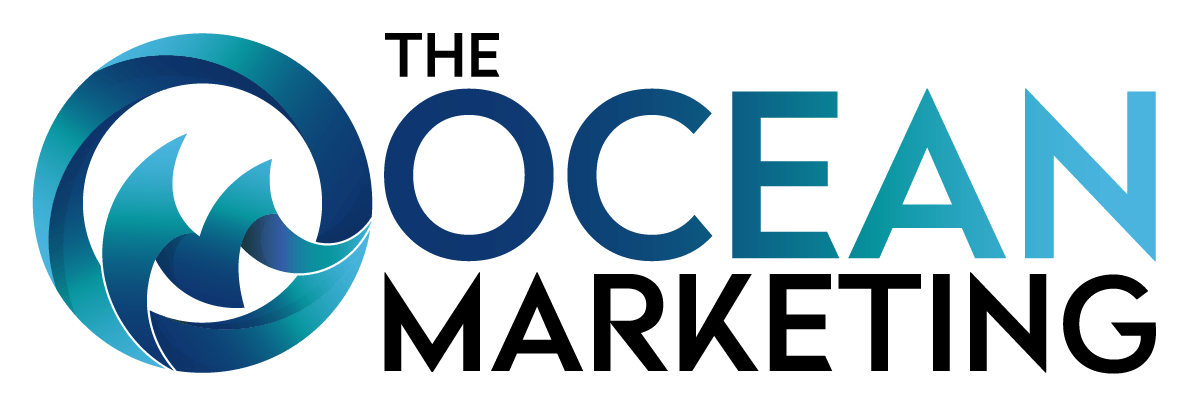
The search is changing faster than ever, and marketers are struggling to keep up. One of the biggest shifts comes from Google’s AI Overviews, the generative summaries that appear above search results. They promise quick answers, cite a few web sources, and often leave marketers wondering: “If I’m cited, why am I not getting any clicks?”
While being featured in an AI Overview can seem like a win, the harsh truth is that citations don’t necessarily translate into traffic. Let’s explore why this happens and what smart marketers should do about it.
Why AI Overview Citations Don’t Drive Clicks
1. Users get their answers instantly
AI Overviews are built to satisfy intent directly on the search results page. When a summary gives users everything they need, there’s little motivation to click through. This mirrors the broader trend of zero-click searches, where users engage with on-page information rather than websites themselves.
Even though your brand might be cited, the interaction often stops there. Users might register your name subconsciously, but your analytics won’t show a visit.
2. Citations lack persuasive appeal
Traditional organic listings come with strong meta titles, descriptions, and visuals that create curiosity or emotional pull. AI Overviews, however, reduce your content to a plain text citation link — often labeled as “source.” That lack of storytelling and context removes the motivation for a user to click.
For marketers who’ve invested years optimizing meta descriptions and CTAs, this stripped-down presentation feels like a serious disadvantage.
3. Organic positions are getting buried
Because AI Overviews sit at the very top of the search page, organic results get pushed down, often below the fold. That means even your number-one ranking page might appear lower on the screen than it used to — significantly impacting visibility and CTR.
This shift is already reshaping how searchers scroll and where they focus their attention.
4. Brand exposure without conversion
Citations do provide visibility and credibility. When your domain is mentioned among top sources, it builds trust signals. But visibility doesn’t equal conversion. The long-term brand lift may be real, yet short-term results like click-throughs and conversions are still missing.
So what’s the fix? It’s time to evolve your SEO mindset.
What Marketers Should Do About It

AI-driven search isn’t going away. Instead of resisting it, marketers must learn to optimize for AI visibility and organic engagement simultaneously. Here are proven strategies to do that effectively.
1. Shift your perspective from “traffic” to “trust”
Instead of measuring success solely by clicks, start valuing AI citation visibility as a top-of-funnel trust metric. If your brand consistently appears in AI Overviews, it signals authority and expertise. That’s valuable brand exposure — even if it doesn’t immediately boost sessions in Google Analytics.
To learn more about adapting to this evolving SEO reality, check out our article on The Future of SEO in a World Dominated by ChatGPT, where we discuss how AI-driven content discovery is transforming organic reach.
2. Optimize for Generative Engine Optimization (GEO)
GEO — or Generative Engine Optimization — focuses on making content more likely to be cited by AI systems. Unlike traditional SEO, it’s less about keyword density and more about answer precision and structure.
To optimize for GEO:
- Write clear, concise answers to specific questions.
- Use clean formatting with strong heading hierarchies.
- Add context and statistics that AI models prefer to summarize.
- Keep your content regularly updated.
By structuring content for comprehension rather than keyword stuffing, you increase the chances that AI systems will surface and cite your pages.
3. Strengthen internal linking for engagement
If a user lands on your page — whether from an AI citation or a traditional link — make their journey matter. Use strategic internal linking to guide readers through related content.
For example, when discussing algorithm updates or ranking factors, naturally integrate a link to a comprehensive post like Google Content Ranking Insights. Such internal connections do more than boost engagement; they also clearly signal your site’s topical authority to search engine crawlers.
Think of internal linking as the bridge between visibility and retention. Even if traffic declines overall, the readers who do arrive will explore deeper and stay longer.
4. Continue investing in organic rankings
Even though AI Overviews dominate above the fold, top organic positions still deliver the highest click-through rates. Continue refining your traditional SEO strategy:
- Craft irresistible meta titles and descriptions.
- Pursue featured snippets and People Also Ask placements.
- Enhance E-E-A-T (Experience, Expertise, Authority, Trust).
- Publish long-form, insight-driven articles with original data.
Organic search remains your most reliable long-term traffic source — and a foundation AI still relies on for training data.
5. Create content that rewards curiosity

AI summaries often scrape the essentials — but not the whole story. Design your content to spark curiosity and offer something beyond what a summary can convey. Try:
- Adding in-depth visuals or infographics.
- Including case studies and expert commentary.
- Offering downloadable tools, templates, or checklists.
- Using storytelling techniques to humanize complex topics.
When AI gives users the “what,” your page should provide the “why” and “how.”
6. Measure what matters most
Finally, focus on metrics that reflect influence, not just traffic. Track impressions, branded search growth, and content engagement depth. Watch how your brand appears in conversational queries or AI-driven results. These visibility signals will become tomorrow’s conversion pathways.
Conclusion
AI Overviews are reshaping the click economy — but they’re not killing opportunity. Citations may not deliver direct clicks, yet they provide a valuable chance to build brand trust and visibility. Marketers who learn to blend traditional SEO with GEO, craft curiosity-driven content, and strengthen internal linking will continue to thrive in this evolving landscape.
For tailored strategies that align with this new search environment, partner with The Ocean Marketing. Our team helps brands turn AI visibility into measurable results. Need help building your next SEO strategy or content roadmap? Contact us today, we’d love to help you adapt and grow.

Marcus D began his digital marketing career in 2009, specializing in SEO and online visibility. He has helped over 3,000 websites boost traffic and rankings through SEO, web design, content, and PPC strategies. At The Ocean Marketing, he continues to use his expertise to drive measurable growth for businesses.

